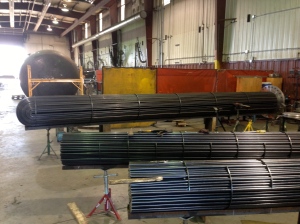Precision Pipe & Vessel, is a Denver based ASME welding and equipment fabrication business with ‘NB’ ‘U’ & ‘R’ Stamps and certification. Precision Pipe designs and builds individual components and complete turnkey skid packages. Precision Pipe has successfully completed more than 4500 jobs since 2000 which include small piping jobs, repairs of pressure vessels, TEMA Type Heat Exchangers, Pressure Vessels, and complete turn key skid packages.
Precision Pipe has a long history of providing cost competitive turnkey packages complete with electrical, instrumentation, controls, and complete engineering packaging. Precision has designed and built many components for installation including: Natural Gas Processing Plants (JT & Refrigeration), Separation, Refrigeration Packages, Dehydration, Compression, Chillers, Line Heaters, Production Units, Cabin Heaters, Tanks, Towers, Stacks, Flares, Boilers, Land Fill Methane Collection.
Although Precision Pipe specializes in Chemical, Oil & Gas processing equipment and facilities, Precision Pipe also has significant domain experience in Renewables, Co2, Prototyping and other process equipment. Precision is staffed with a team of professionals with diverse backgrounds, ingenuity, and the willingness to take risk. We find satisfaction in developing new products and building prototypes. Precision Pipe has helped dozens of companies (including ourselves) develop new products, build fully functional demonstration facilities, and seek patent protection for these innovations. Our product development experience includes gas processing equipment, catalyst, fixed and mobile laboratories, reactors, gasification, alternative fuels, cellulosic biofuels, clean tech, directional drilling, fracking, textiles, cosmetics, pharmaceuticals, oder & emissions elimination, distillation, traditional and renewable energy related developments.
At Precision Pipe We are always looking for ways to save our customers money, improve lead-time, and deliver an excellent product. If you haven’t had a chance to work with us, give us a call, we would love the opportunity to partner with you.



